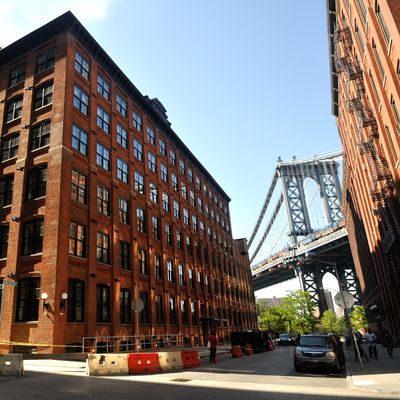
For as long as there have been rivalries, Manhattan has often been presented as the place where people would rather live, and the other boroughs honorable mentions that will do nearly as nicely. That dynamic is shifting. After a spate of new real estate market reports, Brooklyn can now definitively say: “What’s good, Manhattan?”
According to the Douglas Elliman survey, it’s been a record-breaking last three months for Brooklyn and, to a lesser but still significant extent, Queens real estate. The median price of a Brooklyn apartment is now at an all-time high of $676,250 — up 15.1 percent from the year before. Though Manhattan did tremendous business in the third quarter, and Queens did, too — the median in Queens is $450,865, a 14.1 percent jump from the same period in 2014 — Brooklyn is the only borough to best price records set in the heady pre–Lehman Brothers days. “There is no better way to speak to how Brooklyn has changed since the financial crisis,” says appraiser Jonathan Miller, who compiled the Elliman report. “To have the median price grow that much, and no one else grow that much speaks to the change in Brooklyn. It’s essentially a restructuring. [Brooklyn] is a destination.” Miller, who was in Shanghai last month to give a speech, gives this anecdotal, though perhaps telling, evidence: When he and his wife were touring the city, they were struck by how many people they saw wearing Brooklyn T-shirts. “I didn’t see anyone in Manhattan T-shirts,” he adds. “It’s not like anyone’s priced out of Soho and they go to live in Dumbo, it’s that they want to live in Dumbo.”
The outer boroughs also laid to waste any hint of seasonality in the real estate market; though summer is typically a slow season, it appears buyers didn’t get the memo. The number of sales in Brooklyn rose 14 percent to 2,368; Queens by 64.6 percent — yes, you read that right — to 3,642. “It was frenetic this summer,” says Corcoran’s Frank Percesepe, regional director of the brokerage’s Brooklyn offices. “I swear I had to call my agents back from the beach.” According to the Corcoran report, 736 contracts were signed in the third quarter, up 9 percent from 2014 and signaling, perhaps, that the next quarter’s market survey will likely prove as strong as this recent one. (Deals usually close within a few months.) And it took less time for properties to sell, too: 54 days versus 63.
In contrast to Manhattan, where larger apartments saw prices give a little, co-ops and condos with three bedrooms or more in Brooklyn jumped 25 percent from last year’s median of $1.28 million to $1.6 million, per Corcoran. One-to-four-family townhouses — with which Brooklyn buyers are often besotted — saw median prices rise from $675,000 to $760,000, according to Halstead Property.
Low inventory continues to be the driver, as is high demand, says Sarah Burke, Elliman’s regional managing director for Brooklyn. “I don’t know how else to say this, there’s not enough housing.” (Burke recommends that buyers looking for deals that will likely appreciate in the future “go two or three stops [on the subway line] past where you think prime was, and stay within a five-block radius of the subway.)
And so the spillover to Queens, where prices in “all neighborhoods rose sharply,” says Miller, especially in neighborhoods like Long Island City, Sunnyside, Astoria, and Woodside. Buyers who can’t afford in prime areas are expanding their options sharply, trying to divine where the heat is headed next. “People want to be part of something developing,” adds Burke.
Even the suburbs are seeing new waves of buyers; sales in Westchester county are up 5.5 percent from 2014. And properties aren’t exactly cheap, though they’re more affordable than Manhattan and Brooklyn, anyway: The median price for a single-family is $529,000. “We’re looking at the future. Credit isn’t going to ease anytime soon. The NYC economy is probably not going to cool off in short term. It’s robust. Brooklyn isn’t going to lose its identity anytime soon. Inventory isn’t going to suddenly flood the market,” says Miller. “[So] what changes? Buyers and buyer confidence. It’s creating this reassessment of where we want to live.”





























